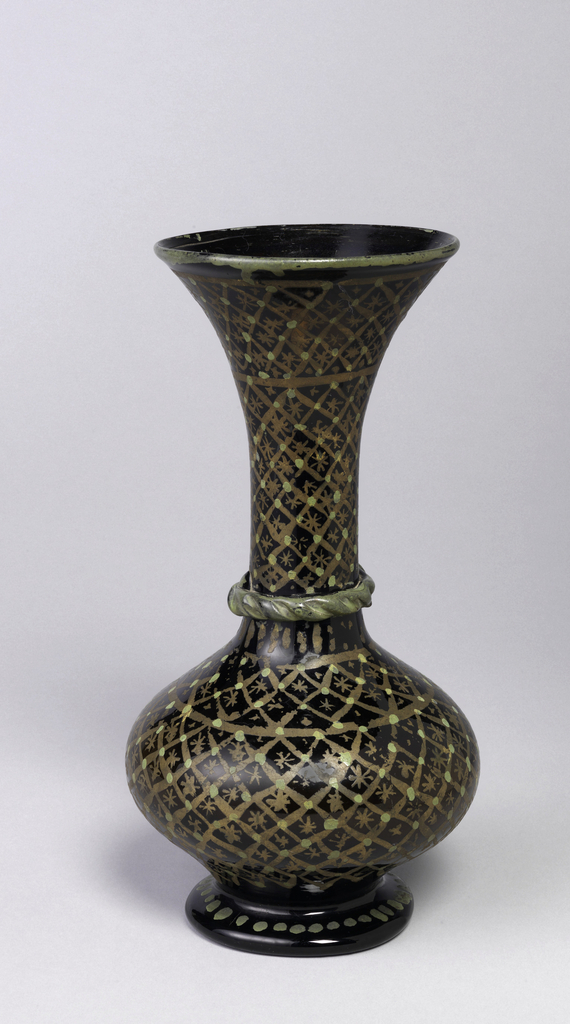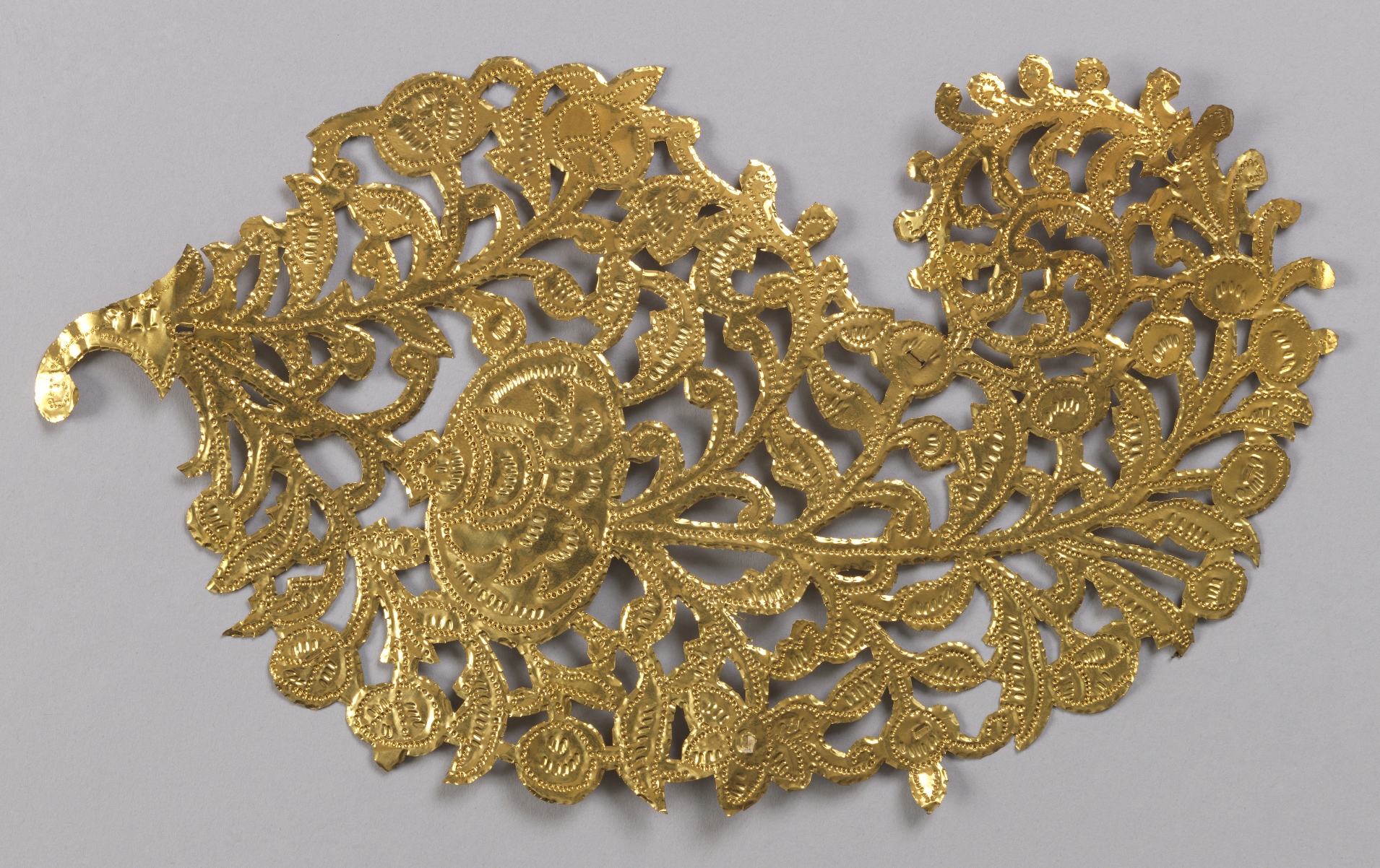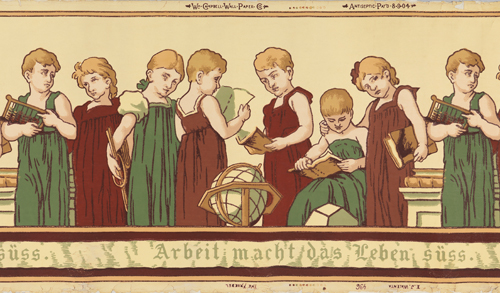This glass vase was made in the 17th or 18th century in Iran. It has a delicate applied glass rope ornament at the base of the neck, and is intricately decorated with gold enamel in a diamond and star pattern. The vase was free-blown, which means that it was produced without the use of a...
This brass foil decoration in what we know as a paisley form represents an example of the designs created by Lockwood de Forest, the foremost exponent of Indian design in America during the last quarter of the nineteenth and early twentieth centuries. De Forest went to India in 1881 on his honeymoon to see first-hand...
The early years of the twentieth century were the high point in children’s room decoration. The Industrial Revolution brought about increased wealth, and children were given their own rooms for the first time. The decoration of a child’s room was supposed to be stimulating and educational, and needed to clearly designate the space as belonging...


